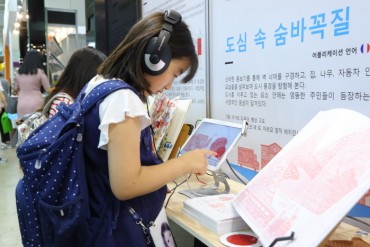
A groundbreaking analysis of microplastics in Seoul’s urban atmosphere has revealed that polyethylene (PE), commonly used in packaging materials and containers, is the most prevalent type of airborne plastic pollution. (Image courtesy of the Seoul Research Institute of Public Health and Environment)
SEOUL, Aug. 14 (Korea Bizwire) – A groundbreaking analysis of microplastics in Seoul’s urban atmosphere has revealed that polyethylene (PE), commonly used in packaging materials and containers, is the most prevalent type of airborne plastic pollution.
On August 13, the Seoul Research Institute of Public Health and Environment announced the results of its pioneering study on airborne microplastics, marking the first such analysis conducted by a public health and environmental research institute in South Korea.
From September of last year to February of this year, researchers installed particulate matter collection devices on the rooftop of their facility in Yangjae-dong, Seocho-gu. Samples were collected monthly for 24-hour periods on clear days, excluding periods of rainfall.
Using Raman spectroscopy, a technique that allows for the identification of particles as small as one-tenth the width of a human hair, the team analyzed the samples after organic matter removal and filtration processes.

A particulate sampler (Image courtesy of the Seoul Research Institute of Public Health and Environment)
The institute had previously established a microplastic analysis system using Raman spectroscopy in 2021, becoming the first among South Korea’s public health and environmental research institutes to do so.
This system is capable of analyzing microplastics smaller than 20 micrometers, though this study focused on particles 5 micrometers and larger.
The analysis revealed an average of 71 microplastic particles per cubic meter of air for particles 5 micrometers and larger. December saw the highest concentration, with an average of 122 particles per cubic meter.
Eight types of plastics were identified: polyethylene (PE), polystyrene (PS), polyethylene terephthalate (PET), polypropylene (PP), polyurethane (PU), polyvinyl chloride (PVC), polyamide (PA), and acrylic.
PE, used in packaging materials and plastic containers, was found to be the most common, followed by PS, which is often used in food containers and cups.
The composition varied slightly by season. In autumn (September to November), the order of prevalence was PE, PS, and PP. In winter (December to February), it shifted to PE, PS, and PU.
The institute plans to expand its analysis to include particles as small as 1 micrometer and conduct monitoring during spring and summer to understand seasonal variations in microplastic pollution.
Park Ju-sung, director of the institute, highlighted the significance of the study. “Most microplastic analyses have focused on marine and soil environments, with limited research on urban atmospheric microplastics,” he said.
“We plan to standardize methods for analyzing microplastics in air quality and gather diverse data to develop practical policies addressing this issue.”
M. H. Lee (mhlee@koreabizwire.com)






